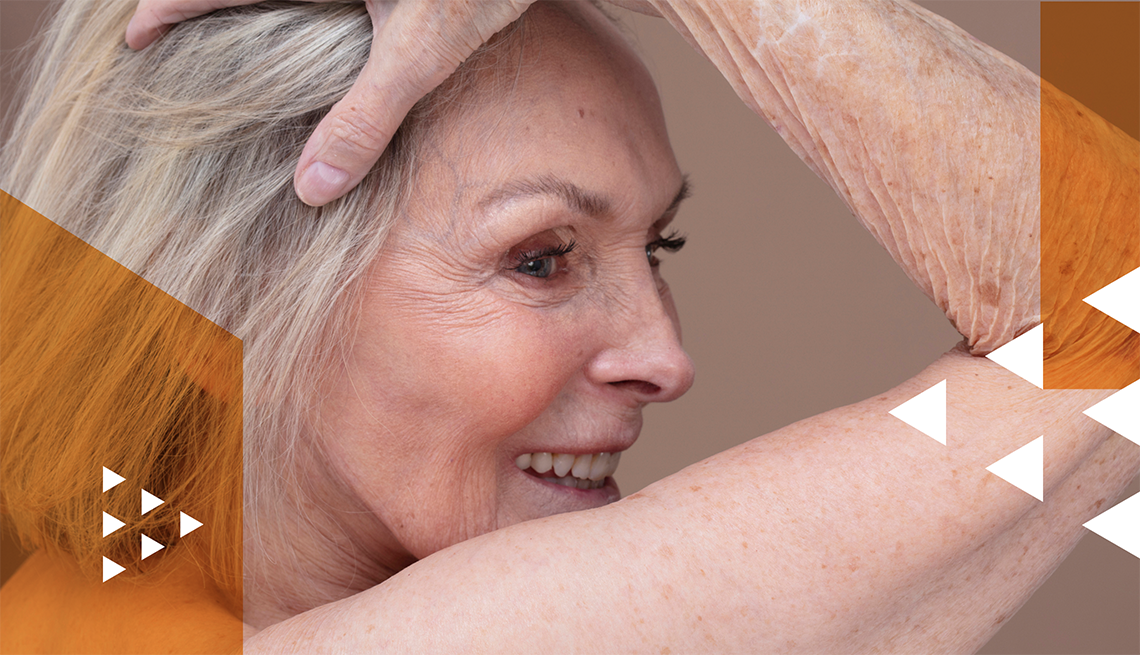
5 ways your skin changes as you age
- Select a language for the TTS:
- UK English Female
- UK English Male
- US English Female
- US English Male
- Australian Female
- Australian Male
- Language selected: (auto detect) - EN
Play all audios:

2. THINNER, DULLER AND MORE FRAGILE As we age, our outer layer of skin thins, largely due to the loss of collagen and fat under the skin, says Melanie Palm, M.D., a board-certified
dermatologist and founder of Art of Skin MD in Solana Beach, California. You may notice “more transparency to the skin and more fragility,” Palm says. “Also, that beautiful juicy radiance
you see on the skin gets dulled.” Aging and sun exposure both contribute to skin thinning, she says. The number of pigment-containing cells in your skin also decreases, making your skin look
paler and more translucent. Over time, it can develop a wrinkled, paperlike texture, and you may find that it damages more easily. At the same time, the blood vessels underneath the skin
become more fragile, leading to easy bruising. “It’s not uncommon for bruises to occur with minimal trauma — it doesn’t have to be a big fall or injury,” says Richard Lucariello, M.D., a
board-certified dermatologist with Waccamaw Dermatology in South Carolina. “Just banging your arm on a table lightly can induce it.” WHAT YOU CAN DO: Some research indicates that applying a
retinol cream could help reverse age-related skin thinning. For example, in a 2018 study published in _Experimental Dermatology, _Brazilian researchers found that topical retinol helped in
“restoring dermal thickness.” Another study found that retinoids, such as retinoic acid and retinol, significantly increased the thickness of the skin’s outer layer after just four weeks of
use. Because retinol creams can dry out the skin, Lucariello recommends using them only every other day for the first few months, until your skin adapts. He suggests pairing the cream with a
thick, high-quality moisturizer, which has the added benefit of further protecting your skin from tearing and damage. 3. AGE SPOTS AND DISCOLORATION Too much sun exposure can lead to
freckles, pigment irregularities and flat dark patches, referred to as age spots, sun spots or liver spots. Lentigines (their clinical name) are most common in areas that get a lot of sun,
such as your face, hands, arms, back and feet. Although young people who spend a lot of time in the sun can develop age spots, they are especially common in people over age 50. Age spots
don’t require treatment, but what looks like an age spot could be skin cancer, so it’s important to have it evaluated by a dermatologist. WHAT YOU CAN DO: If your sun spots bother you, there
are several options for evening your skin tone and fading spots, Makhzoumi says. Prescription-strength retinol or hydroquinone creams can make them disappear over time. Over-the-counter
creams specifically designed for treating dark spots can also help if you use them consistently. For a faster fix, ask your dermatologist about laser treatments, chemical peels,
microdermabrasion or intense pulsed light therapy (IPL, also called a photofacial). To prevent sun spots, stay out of the sun or apply sunscreen to exposed areas.
